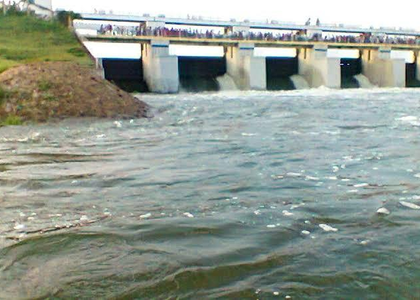Heavy rain revives Chennai catchment areas; water released from three major reservoirs
By IANS | Updated: November 17, 2025 14:20 IST2025-11-17T14:16:59+5:302025-11-17T14:20:09+5:30
Chennai, Nov 17 With widespread rain returning to Tamil Nadu and catchment areas receiving substantial inflow over the ...

Heavy rain revives Chennai catchment areas; water released from three major reservoirs
Chennai, Nov 17 With widespread rain returning to Tamil Nadu and catchment areas receiving substantial inflow over the past 48 hours, the Tamil Nadu Water Resources Department (WRD) on Monday commenced precautionary discharge of surplus water from three key reservoirs that supply drinking water to Chennai.
Officials said the release was initiated to ensure safe storage levels as rainfall is expected to continue over the next few days.
According to WRD authorities, a total of 5,400 cusecs of surplus water was released from the Poondi, Chembarambakkam, and Puzhal lakes. These reservoirs, which form the backbone of Chennai’s drinking water network, have been witnessing steady inflows following heavy showers triggered by a low-pressure system over the Southwest Bay of Bengal.
At Chembarambakkam Lake, one of the city’s largest waterbodies, the discharge was doubled from 600 cusecs to 1,200 cusecs after water levels rose rapidly on Monday morning.
Officials said the inflow from upstream channels has been robust since Sunday night, prompting the need to regulate the reservoir to maintain buffer space for additional rain.
Similarly, Poondi reservoir, which contributes significantly to the city’s daily drinking water supply, saw its release increased from 2,500 cusecs to 3,000 cusecs. WRD engineers noted that catchments feeding Poondi had received intense spells overnight, causing a swift rise in storage levels.
Meanwhile, Puzhal Lake -- also known as Red Hills reservoir -- continued to discharge 1,200 cusecs, a measure officials termed “purely precautionary” to prevent overloading the reservoir as inflows strengthen.
In addition to these three reservoirs, other key lakes such as Cholavaram, Kannankottai–Thervoy Kandigai, and Veeranam also form part of Chennai’s extensive drinking water system and are being closely monitored.
The Regional Meteorological Centre (RMC) in Chennai said the state is likely to receive heavy to very heavy rainfall till November 21, owing to a low-pressure area persisting over the Southwest Bay of Bengal off the Sri Lankan coast.
The system, which is expected to move west-northwestward, may intensify rainfall activity along coastal and northern districts. Disaster management teams and district administrations have been alerted to maintain heightened readiness as water discharge from reservoirs is likely to be regulated further depending on rainfall intensity.
The WRD has urged residents living near the banks of surplus canals and downstream areas to stay cautious as water levels may fluctuate over the next few days.
Disclaimer: This post has been auto-published from an agency feed without any modifications to the text and has not been reviewed by an editor
Open in app